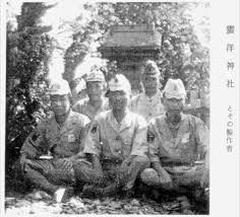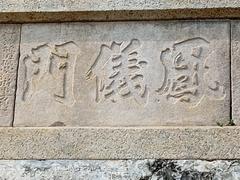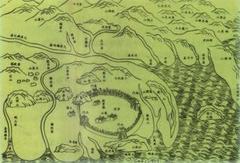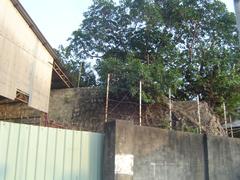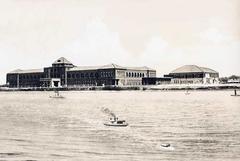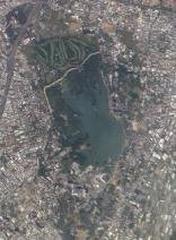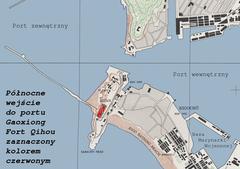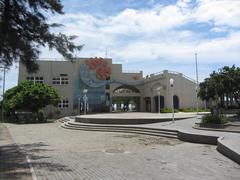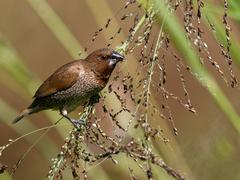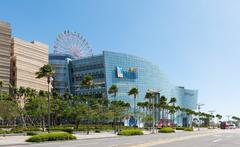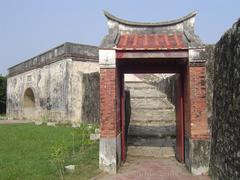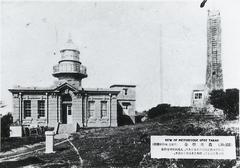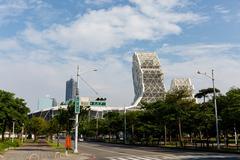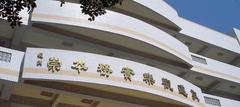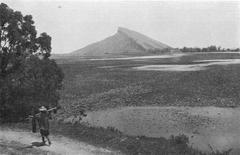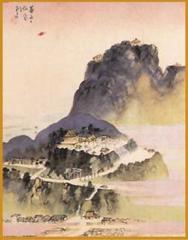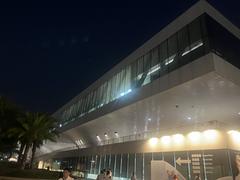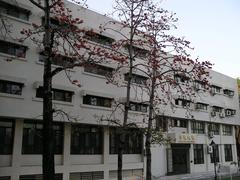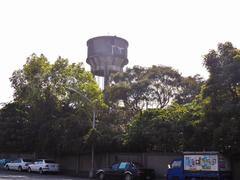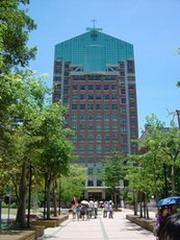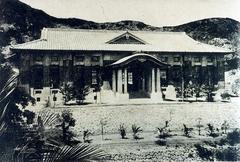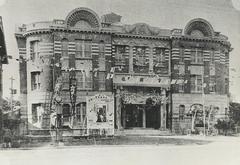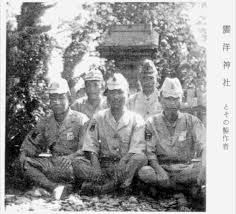
Comprehensive Guide to Visiting Old City Small Trip, Kaohsiung, Taiwan
Date: 24/07/2024
Introduction
Kaohsiung, Taiwan’s largest port city, offers an unparalleled blend of historical depth, cultural vibrancy, and modern innovation. From its humble beginnings as a fishing village named Takau, Kaohsiung has transformed into a bustling metropolis teeming with cultural landmarks, historical sites, and culinary delights. The heart of Kaohsiung’s historical and cultural heritage is encapsulated in Jiùchéng, the old town, where visitors can immerse themselves in centuries-old traditions and architectural marvels. This comprehensive guide aims to provide valuable insights into the city’s rich history, covering essential visitor information, and offering practical tips to make your visit unforgettable. Whether you’re a history buff, art enthusiast, or food lover, Kaohsiung promises a multi-faceted experience that reflects its unique heritage and contemporary allure (Agoda, MsTravelSolo).
Table of Contents
- [Introduction](#introductionintroduction)
- [Early Beginnings and Maritime Heritage](#early-beginnings-and-maritime-heritageearly-beginnings-and-maritime-heritage)
- [Colonial Influences and Architectural Landmarks](#colonial-influences-and-architectural-landmarkscolonial-influences-and-architectural-landmarks)
- [Educational and Cultural Development](#educational-and-cultural-developmenteducational-and-cultural-development)
- [Modern Transformation and Economic Growth](#modern-transformation-and-economic-growthmodern-transformation-and-economic-growth)
- [Cultural Renaissance and Artistic Flourishing](#cultural-renaissance-and-artistic-flourishingcultural-renaissance-and-artistic-flourishing)
- [Culinary Heritage and Night Markets](#culinary-heritage-and-night-marketsculinary-heritage-and-night-markets)
- [Visitor Tips and Practical Information](#visitor-tips-and-practical-informationvisitor-tips-and-practical-information)
- [FAQ](#faqfaq)
- [Conclusion](#conclusionconclusion)
Exploring Kaohsiung - Visiting Hours, Tickets, and Historical Sites in Taiwan
Early Beginnings and Maritime Heritage
Kaohsiung’s history dates back centuries, beginning as a modest fishing village known as Takau. The name ‘Takau’ is derived from the indigenous Makatao language, meaning ‘bamboo forest,’ reflecting the area’s natural landscape. The village’s strategic location along the southwestern coast of Taiwan made it an ideal spot for maritime activities, which laid the foundation for its future as a bustling port city.
One of the earliest significant historical sites in Kaohsiung is the Takau Old Fort, constructed in the 17th century to defend against pirate attacks. The fort’s ancient walls and cannons provide a glimpse into the city’s maritime heritage and the challenges faced by its early settlers.
Visiting Information
- Opening Hours: 9:00 AM - 5:00 PM daily
- Tickets: Free entry
Colonial Influences and Architectural Landmarks
Kaohsiung’s history is marked by various colonial influences, particularly from the Dutch and the Japanese. The Cihou Fort, built by the Dutch in the 17th century, stands as a testament to the island’s tumultuous past. This fort, located on Cijin Island, was later used by the Japanese during their occupation of Taiwan. Visitors can walk along its ancient walls and enjoy panoramic views of the Kaohsiung harbor, reflecting on the fort’s historical significance.
Visiting Information
- Opening Hours: 8:30 AM - 5:30 PM daily
- Tickets: NT$50
Another notable colonial-era landmark is the Former British Consulate, which dates back to the 19th century. This consulate, perched on a hill overlooking the harbor, offers insights into the diplomatic and trade relations between Taiwan and the British Empire. The building’s Victorian architecture and well-preserved interiors provide a window into the colonial past.
Visiting Information
- Opening Hours: 9:00 AM - 9:00 PM daily
- Tickets: NT$99
Educational and Cultural Development
The Qing Dynasty era saw significant advancements in education and culture in Kaohsiung. The Fongyi Academy, established during this period, played a crucial role in promoting education in the region. This academic institution, with its elegant courtyards and traditional architecture, offers a tranquil setting for those interested in learning about the city’s intellectual past.
Visiting Information
- Opening Hours: 9:00 AM - 5:00 PM daily
- Tickets: NT$30
Kaohsiung’s cultural heritage is also reflected in its numerous temples and religious sites. The Kaohsiung Confucius Temple, located near the Lotus Pond, is a prime example of traditional Chinese architecture and Confucian values. This temple, dedicated to the great philosopher Confucius, serves as a center for cultural and educational activities, preserving the teachings and traditions of ancient China.
Visiting Information
- Opening Hours: 8:00 AM - 5:00 PM daily
- Tickets: Free entry
Modern Transformation and Economic Growth
Kaohsiung’s transformation from a small fishing village to a major international port is a testament to its resilience and adaptability. The city’s modern history is characterized by rapid industrialization and economic growth, particularly during the Japanese colonial period and the post-World War II era. The development of the port and the establishment of various industries, including shipbuilding and manufacturing, have played a significant role in shaping Kaohsiung’s economic landscape.
The Kaohsiung Museum of History offers a comprehensive overview of the city’s evolution. Housed in a former government building, the museum features exhibits on Kaohsiung’s history, from its early days as a fishing village to its rise as a bustling metropolis. Visitors can explore artifacts, photographs, and interactive displays that highlight the city’s industrial and cultural development.
Visiting Information
- Opening Hours: 9:00 AM - 5:00 PM (Closed on Mondays)
- Tickets: NT$30
Cultural Renaissance and Artistic Flourishing
In recent years, Kaohsiung has undergone a cultural renaissance, emerging as a hub for contemporary art and culture. The Pier-2 Art Center, located near Kaohsiung Harbor, is a prime example of this transformation. This former warehouse district has been repurposed into a vibrant art space, showcasing creative street art, interactive exhibitions, and various cultural events. The center’s unique blend of history, architecture, and contemporary art makes it a must-visit destination for art enthusiasts.
Visiting Information
- Opening Hours: 10:00 AM - 6:00 PM daily
- Tickets: Free entry (some exhibitions may have an entry fee)
Another significant cultural site is the Fo Guang Shan Buddha Museum, one of the most important religious and cultural landmarks in Kaohsiung. The museum, home to a large bronze sitting Buddha statue, offers a serene atmosphere and provides insights into Buddhist teachings and practices. It serves as a center for cultural exchange and spiritual enlightenment, attracting visitors from around the world.
Visiting Information
- Opening Hours: 9:00 AM - 7:00 PM daily
- Tickets: Free entry
Culinary Heritage and Night Markets
Kaohsiung’s rich cultural heritage is also reflected in its diverse culinary offerings. The city’s night markets, such as the Liuhe Night Market and the Ruifeng Night Market, are renowned for their delicious street food and lively atmosphere. Visitors can savor a variety of Taiwanese specialties, including oyster omelettes, beef noodles, and shaved ice desserts. These night markets provide a sensory feast and offer a unique culinary experience that reflects the city’s vibrant culture.
Visitor Tips and Practical Information
For those planning to explore Kaohsiung’s historical and cultural sites, here are some practical tips:
- Transportation: Kaohsiung is well-connected by public transportation, including the MRT, buses, and ferries. The high-speed train from Taipei to Kaohsiung takes approximately 90 minutes, making it a convenient option for travelers.
- Accommodation: The city offers a range of accommodation options, from budget-friendly hostels to luxury hotels. Popular areas to stay include the Xinxing District, known for its night markets, and the Gushan District, home to historical sites and cultural attractions.
- Weather: Kaohsiung has a tropical climate, with hot and humid summers and mild winters. The best time to visit is during the cooler months from November to March.
- Local Etiquette: When visiting temples and religious sites, dress modestly and be respectful of local customs and practices. It is also customary to remove your shoes before entering certain areas.
FAQ
What are the visiting hours for Cihou Fort?
- The visiting hours for Cihou Fort are from 8:30 AM to 5:30 PM daily.
How much does it cost to visit the Kaohsiung Museum of History?
- The ticket price for the Kaohsiung Museum of History is NT$30.
Conclusion
Whether you’re a history buff, an art enthusiast, or a food lover, Kaohsiung promises an unforgettable travel experience. By visiting its historical landmarks, indulging in its culinary scene, and exploring its cultural sites, you can immerse yourself in the rich heritage and vibrant culture of this remarkable city. Don’t forget to check out our mobile app for more travel tips and follow us on social media for the latest updates (Discovering Taiwan, Hoponworld).
References
- Discovering Taiwan, 2024, The Ultimate Guide to Exploring Kaohsiung: 10 Must-Visit Attractions
- Agoda, 2024, A Local’s Guide to Hidden Gems in Kaohsiung
- MsTravelSolo, 2024, Things to Do in Kaohsiung, Taiwan
- Hoponworld, 2024, Kaohsiung Itinerary: 2 Perfect Days in Kaohsiung
